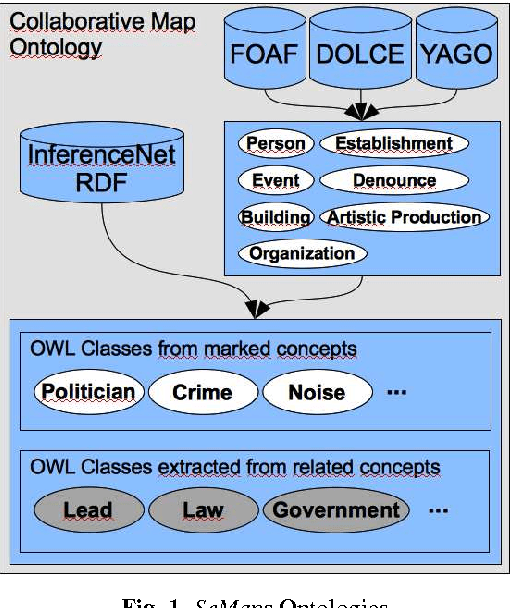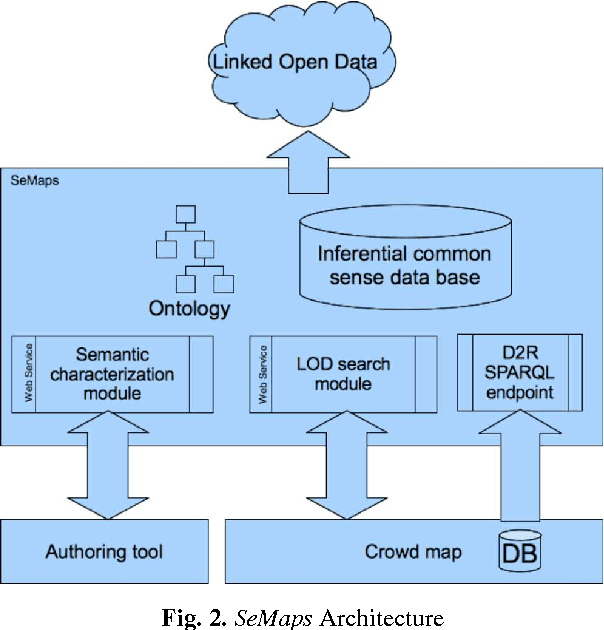A Service-Oriented Architecture for Assisting the Authoring of Semantic Crowd Maps
Paper and Code
Apr 06, 2017



Although there are increasingly more initiatives for the generation of semantic knowledge based on user participation, there is still a shortage of platforms for regular users to create applications on which semantic data can be exploited and generated automatically. We propose an architecture, called Semantic Maps (SeMaps), for assisting the authoring and hosting of applications in which the maps combine the aggregation of a Geographic Information System and crowd-generated content (called here crowd maps). In these systems, the digital map works as a blackboard for accommodating stories told by people about events they want to share with others typically participating in their social networks. SeMaps offers an environment for the creation and maintenance of sites based on crowd maps with the possibility for the user to characterize semantically that which s/he intends to mark on the map. The designer of a crowd map, by informing a linguistic expression that designates what has to be marked on the maps, is guided in a process that aims to associate a concept from a common-sense base to this linguistic expression. Thus, the crowd maps start to have dominion over common-sense inferential relations that define the meaning of the marker, and are able to make inferences about the network of linked data. This makes it possible to generate maps that have the power to perform inferences and access external sources (such as DBpedia) that constitute information that is useful and appropriate to the context of the map. In this paper we describe the architecture of SeMaps and how it was applied in a crowd map authoring tool.
 Add to Chrome
Add to Chrome Add to Firefox
Add to Firefox Add to Edge
Add to Edge